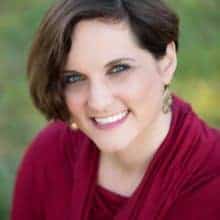I teach in rural western North Carolina at a small high school where approximately 30 percent of our students are Native American. I am the only full-time, tribally enrolled member of the faculty at our school.
Our county is a The Leader In Me school system, grounded in the tenants of Covey’s Seven Habits of Highly Effective Teens. To say that we embrace student leadership development is a gross understatement. This philosophy has transformed our school culture and markedly empowered our students over the past several years.
However, when I returned to the classroom after a brief hiatus, the last thing I wanted to do was pass around the talking stick that was offered to me at my first Seven Habits training. Talking sticks, like dream catchers and peace pipes, fall somewhere in the realm of cultural appropriation (or rather misappropriation) and stereotypical, romanticized bunk. To label any practice as “Native American” should be the first indication that it probably is not. To call a practice Cherokee, or Lakota, or Cheyenne indicates a path toward authenticity—specificity. I have never met a tribal person from any tribe who has used a talking stick—unless, perhaps, he or she was part of a Covey training.
So, early into my first Covey training experience, my colleagues quickly gauged my reaction, and in good fun, made sure I always had a talking stick close at hand. This also might be a good time to mention that a sense of humor is one of the seven core values of Cherokee culture. The formalization and reiteration of these values is essential to the guidance of the Cherokee Preservation Foundation’s work.
The hiatus from teaching I spoke of earlier was to serve as the Executive Director of the Cherokee Preservation Foundation. One of the flagship funding areas for the Foundation is Cherokee Cultural Leadership. In our culture, traditional leadership style values consensus building, not unlike Covey’s habit of Synergize. However, it is vastly different than the western model of representative, hierarchical governance.
An example of this that the Foundation often shares involves the Cherokee Youth Council. This group of pre-teens and teens were selecting the color of the shirts they wanted to order for the year. The girls in the group were vocal in their preference for pink, but the boys were far less enthusiastic about the color choice. After the shirts were ordered, one of the boys complained that he was not happy about having to wear a pink shirt. When asked if he objected to the decision, he responded that he felt he would have just been overruled.
This is when an adult mentor explained, “All you had to do was say no. You didn’t have to argue your case or convince anyone. One voice of non-consent would have halted the order.”
Consensus leadership insures that no matter how underrepresented the voice, no matter how quiet the speaker, the opinion carries equal weight with all other voices within a group.
Those unfamiliar with the concept often worry that this would inevitably stall decision-making. In practice, it is quite the contrary. When effectively executed, consensus leadership ensures that the polarization stalling our modern American government is no longer a petri dish cultivating the division that has infected society.
For the same reason that I appreciate my colleagues teasing me about talking sticks, I appreciate how consensus leadership promotes inclusivity, not an awkward half-hearted attempt at political correctness. The rules are hard and fast. It is the ultimate in speaking truth to power because everyone is in power. When I consider my students, native and non-native, I do not want to assume that they will always have access to a talking stick or the real-world equivalent of such. They already possess the power of voice within. We just need to make room for it, value it, and demand its influence over the whole educational process—even if this voice is singular.
What does this look like in practice? It is nothing too different than what strong teachers have been doing for years. It is the acceptance that there are no wholly “right” answers because strong questions disallow for a singular, universal truth.
As educators, we have a responsibility to amplify the voices tempered by a majority perspective so that those in majority can re-vision the potential for emboldened answers only made possible by a myriad of vantage points.

